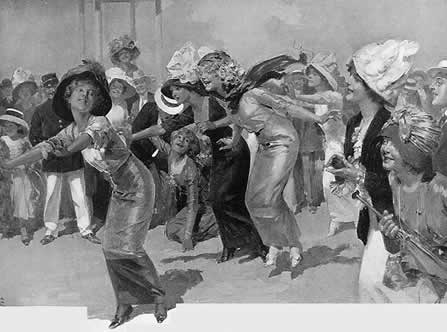Hobble Skirts
Hobble skirts are designed to slow women from walking. This skirt was inspired from the term for tying a horse's feet together to keep it from running away. The name for this tight-fitting skirt became popular in the 20th century. Of all fads in fashion of the Edwardian era, none was so provocative - or dangerous - as the hobble skirt. French Coutier Paul Poiret claimed to have created the hobble skirt, but the narrow, nearly skin-tight skirt had its roots in the early 1880s when fashion placed emphasis on the posterior hidden beneath a neat, erotic bustle. However, it wasn't until skirts began to narrow once more circa 1908/9 when the true "Hobble Skirt" made its appearance.

In 1914, the hobble skirt was all the rage. To eyes used to seeing women's bodies enveloped in yards of fabric, these skirts were a shocking reminder that women had ankles, legs and derrieres.
While rumors surround the moment when women's skirt's when from heavy and billowing to light and tight-even the Wright Brothers claimed they came up with the fashion when they tied a string around an early passenger's flapping skirt - nobody knows for sure who invented this trend. The skirt's popularity can be traced to Paul Poiret's 1908 designs for select French clients, which featured dresses designed to be worn without petticoat or corset's.
What hobble skirt's wearers gained in good looks, they sacrificed in mobility. As mass-produced copies of Poiret's new narrow, leg-emphasizing skirt hit American streets, women no longer strode or glided. Instead, they took tiny, mincing steps, wiggling their way into a full blown fashion scandal.



No comments:
Post a Comment